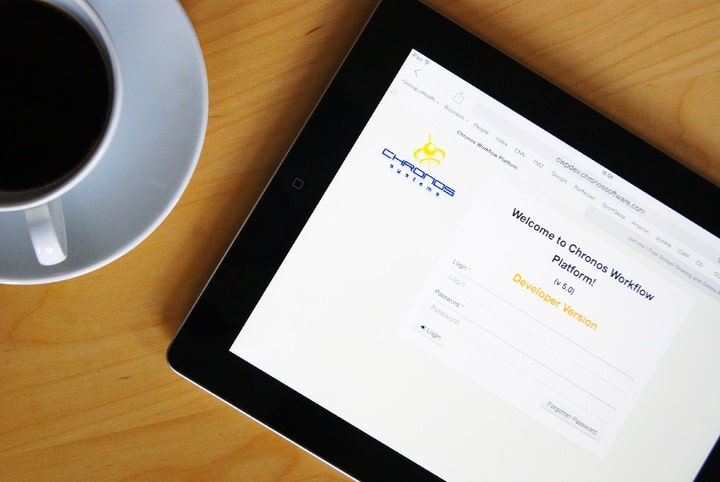The Art & Science of Selecting a New System
November 20, 2018 | Accounting Help, Grow Your Business | No Comments

In the business world, we’re all about systems. Software and programs help us manage all aspects of our office life. But, of course, as time marches on, systems become outdated. If you’re considering an upgrade or update, there’s an art and a science to selecting a new system.
No matter which business system you are trying to replace, your process should always start with exploration. Before you consider selecting a new system, there are some basic questions you need to answer. I may sound like a broken Simon Sinek record, but nearly every business decision you make from acquisition negotiations to systems selection should start with why. Before starting the search for a system, analyze all the reasons why you are seeking to upgrade, replace, or add a new system for your company.
Often, the process of selecting a new system starts with researching on the internet to “find the best investment,” rather than an evaluation of what you are trying to accomplish with the new system. Research-first, ask why later is not a good strategy. You’re setting your company up for extra work, if not a failure.
Without identifying your needs and then evaluating how the new system will potentially meet those needs, you’re susceptible to the sales pitch and biases of the individuals involved in the selection process. Selecting a new system requires self-awareness and analysis—know what’s working and what areas of the business need attention. Be aware that a new system will not solve organizational dysfunction. It can, however, be used as a catalyst for change and improved efficiency you desire. This is why you must start with the big questions before selecting a new system.
Why are you going to invest in the new system?
The question of why is the most important one to ask at the beginning of any new business process. The most common reason for the selection of a new system is to improve the efficiency and the effectiveness of the business in some aspect. That’s a very broad umbrella and unless you define what that looks like in much more detail, the system selection or implementation goals will fall short.
Selecting a new system need not be a big project because, as you know, entrepreneurs tend to be action-driven. In an entrepreneurial business, slowing down the action for some deeper thinking makes the entire process easier.
What are the considerations and outcomes expected in changing systems?
Depending on the size of your business, the amount of your day-to-day participation in the actual system change will vary. Depending on your delegation skills and preferences, you may be very involved or fairly hands-off. As CEO, you need to make sure your team has answers to their questions, especially the questions of why and what when selecting a new system and during the implementation process.
Before You Start Researching a New System
Before you start “googling,” it’s important that you define the need. Are you looking for an accounting system, an HR system, a timekeeping system, or a fully integrated ERP system? Know what solutions you’re seeking and which systems you need to improve before you start your search. If your identified needs change during the process (you started looking for an accounting system, but see the benefits of the ERP), go through the full exercise of exploring why the change once again. You started with an initial rationale and now it’s different — why? Should you still go forward with the change?
Once you’ve explored the why, there are other questions you should explore as you assess your need for a new system:
-
- What are our current processes and workflows? How will the new system revise the workflow, and do we have an evaluation and documentation process in place? Do we know the internal costs of our current processes? If not, how can we measure and assess any improvements?
-
- Is there discipline and order in the existing processes? Does the right information get in the right place in a timely manner? If not, how will the new system improve discipline? Or, more importantly, how will we need to change our management and expectations to encourage this discipline and ensure success?
-
- Are we only trying to eliminate manual processes or are we trying to improve the processes as well? If we “computerize” manual processes, have we missed out on an opportunity for improvement? Should we be following the current processes, altering them for efficiency or even eliminating them altogether?
-
- How will the selection and implementation impact existing business operations and how will we accommodate the disruption? Can we afford to pay our staff overtime during the new system implementation? What incentives might we consider for staff who puts in extra effort on the system?
-
- How will the new system change impact our customers? Will they receive information faster? Will it be more secure? Will there be a lower likelihood of errors? Will our customers even notice the change?
-
- If the new system is creating efficiencies, whether in processing or IT, how will we position those efficiencies within the current staff? Will they lose their jobs due to automation, or will they simply move to a different role and take on new tasks? What motivation will current staff have to help with the new system implementation if they could potentially lose their job?
Getting Ready for Selecting a New System
After exploring some of the challenging background questions about your company and the need for the new system, it’s time to start the process of selecting a new system. Once again, taking a deep dive on self and company-assessment on the front end will prevent many issues from cropping up down the road.
Here are some important areas to explore as you get ready for selecting a new system:
-
- Have we defined what we need from the new system? What are the needs/wants/nice-to-haves that we will need to evaluate the new system against? Are there software comparisons and assessments online that we can use as an assessment starting point?
-
- Do we have the right people defining the system needs of the company, to create a comprehensive view of the new system’s impact? Each department carries biases whether financial, manufacturing, marketing, HR, or another area, and these biases can affect their perception of the need for the new system.
-
- As we’re selecting a new system, what is the budget range to meet our objectives? Should we determine a hard budget before beginning our search and selecting our new system, or should we seek information first to decide on a relevant budget range? What do we need to consider if we can’t find a new system within our target budget range? How will we determine Plan B?
-
- Do we have the right on-staff talent internally to create a decision matrix and facilitate the review process for selecting a new system? Do we need to look externally for an objective resource?
-
- If our company is buying a large system, can we request and schedule an onsite demo? In my experience, most demos now take place online. Not unlike those onsite in the past, every system manufacturer claims that “the system can do it all,” so buyers beware. Demand a demo when possible, especially for a large investment in a new system.
Smoothing the System Selection Process
Once you’ve decided on your internal factors like budget, staff, and workflow, it’s time to start selecting a new system. This process includes shopping around and narrowing down your choices.
Here are the steps for selecting a new system (especially) if you have several options to choose from:
-
- Which systems are our industry peers and competitors using? Compare the systems not only of your direct peers but of businesses that are the size you aspire to grow into.
-
- Do we need to select a new system that’s industry-specific? Do we need to integrate features for manufacturing operations or timekeeping? Will extra features and integration capacity add value to our new system or just complexity?
-
- Are we seeking a fully integrated system or integration of multiple “best in class” options? What is the downline cost of each alternative – more conformance to the system, more manual reporting, or systems integration costs? Do the various best-in-class system options integrate and how complex is the process? If we decide on the best-in-class option when selecting a new system, do we have an IT team that can support the 24×7 nature of the new systems? Is our organization moving toward cloud-based systems or SaaS models? Do you prefer to host information as sensitive as finance and HR data? Do you have the system security protocol in place to protect customer data?
-
- What are the reporting tools available in each of the new system options, and how do we expect to use the tools?
-
- Can we quickly narrow down the new system selections to 2 or 3 choices and only delve deeply into the finalists?
-
- Can we contact current users of the new software options and preferably visit them onsite to see how they actually use it? If not, why not?
-
- Is the new system we’re considering the right size (cost and complexity) for our current company? Is it scalable to our growth, and will it support where we plan to be in the next 5 years? Can we use the new system in either its most simple or complex form? Are we buying a more robust system than we need or would ever use?
-
- How will we evaluate the total cost involved in selecting a new system and the implementation process? Do we have benchmarks? (For example, multiply the system cost by 2 to estimate the additional cost of consulting.) Be sure to include hardware and software costs. Don’t forget the depreciation expense of the new system in your costing models. Areas that are often missed in the cost assessment are the testing regions needed before implementation of the new system and all the development to integrate the new platform. Whatever you estimate for hours, assume 2x. After selecting a new system, your business will likely change during the changeover and implementation process. Incremental changes will need to be accommodated that were not anticipated at the beginning.
-
- What are the ongoing costs of the new system? Are there monthly per-seat costs, annual upgrades, etc., and what options do those costs include? In my experience, if you are comparing two or more systems on cost alone, you should consider a 3 to 5-year horizon. For example, if you have a first-year maintenance plan included on one and not the other, or if you need hardware upgrades or additional reporting tools to accommodate one of the systems, be sure to include those costs when selecting a new system.
Planning for the Implementation of the New System
Once you’ve decided on the best new system for your business, the next step is planning for the implementation. There are several assessment questions to explore that will help you create a smooth implementation.
Here are the questions to ask:
-
- How will we switch to the new system–running a concurrent system for a timeframe or a cold cutover? Who will decide and what will the decision be based on? If it is a concurrent switch, there is an additional workload to consider? What kinds of testing and preparation are needed for the system change?
-
- Do we need to convert customer and company data from the current system to the new system? Data conversion can be costly and time-consuming. It’s rare that data will convert seamlessly from one system to another.
-
- Does your data need to be replicated to a database for reporting? Don’t forget to estimate staff time and efforts required for reporting.
-
- Who will decide the staff training plan required on the new system and develop the documentation? How and when will process changes be incorporated into the system documentation and training?
-
- What should our customers and vendors know about our change? Will the system change be transparent? Will customer or vendor interaction change? If there are differences, how will customers and clients learn how to use the system? Do we need to plan on training? What is the communication plan?
-
- Which processes are we willing to change and adapt based on the best practices built into the selected system? Do we need to adjust a “we’ve always done it that way” mentality?
-
- Can we move the data into the new system at the time it is created? Can we eliminate extra touches on the data entry process by authorizing appropriate access to the new system for any individual involved with the process?
Selecting a new system is truly an art and a science. System feature implementation varies by the personality and culture of your company. Some companies prefer to seek out ALL possible features available in the new system and attempt to implement the features into the company processes. Other companies may find the skeleton to be enough for their business at first.
Since most systems are designed around the common denominators, it will not meet all the needs/wants/nice-to-haves of everyone in the company. Remember there will be trade-offs when selecting a new system. Reporting and integrations with other software systems are often critical to the performance you want to achieve.
It’s important for leadership to be cognizant of the fact that new systems create change and change creates uncertainty. Uncertainty fuels the rumor mill. To counteract concerns and allay fears, as soon as possible, start the communication cycle on the new system. Start setting expectations and giving notice to those who might be involved in selecting a new system and in the implementation process. Explain the why and the what. Continue with regular status updates, both formal and informal.
As with any other new process, setting expectations is key. New systems do not solve business problems. A new system implemented with poor discipline and incorrect data simply means you get bad information faster. Cash flow problems don’t go away with a new system either. However, new systems, when implemented with due diligence on the front end will improve effectiveness and efficiency in the organization. Use the system change to your advantage; a new system is often the catalyst for changes you want to achieve.
Featured image via Pxhere. All images licensed for use via Pxhere licensing.




